 |
|
|
Translate this page in your preferred language:
|
| Use of Tree Leaves |
| Back |
JOWAR (SORGHUM)
 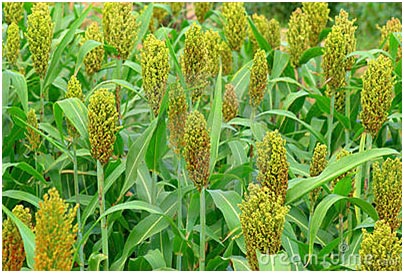
JOWAR (SORGHUM)
Botanical Name : Sorghum bicolor (L.) Moench
Family : Poaceae (alt. Gramineae)
Subfamily : Panicoideae
Tribe : Andropogoneae
Introduction
- Sorghum is indigenous to Africa, and most of prevalent varieties originated on that continent.
- Sorghum was also grown in India before recorded history and in Assyria as early as
700 BC.
- Sorghum, besides being fifth most important cereal crop of the world, is also valued for its fodder and stover.
- Sorghum fodder is suitable for silage and hay making.
- India, fodder sorghum is grown in 2.6 m ha mainly in western UP, Haryana, Punjab, Rajasthan and Delhi and fulfills over two third of the fodder demand during Kharif season.
- Under drought conditions, sorghum leaves tend to fold rather than roll. A heavy whitewax (bloom) usually covers sorghum leaf blades and sheaths, protecting them against waterloss under hot, dry conditions.
Cultivation Practices
- NNormally 2–3 harrowings are required before taking up planting as rainfed crop and sown with the onset of monsoon.
- Seed rate is 10 kg/ha for single cut and 25 kg/ha for multicut sorghum.
- Optimum spacing is 45 cm between rows for multicut sorghum and
30 cm forsingle cut sorghum. Fertilizer application of 100 kg N and
60 kg P2O5/ha for multicut sorghum and 80 kg N and 40 kg
P2O5/ha for single cut sorghum is recommended.
- In forage sorghum, the mixed cropping is also practiced with fodder legumes, viz., Pigeon pea, cowpeaand cluster bean, in
2:1 ratio to improve fodder yield and quality.
BAJRA (PEARL MILLET)
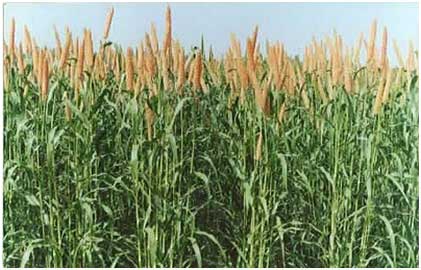 
BAJRA (PEARL MILLET)
Botanical Name : PennisetumglaucumL. R. Br. Emend. L. Stuntz
Family : Poaceae (alt. Gramineae)
Subfamily : Panicoideae
Tribe : Paniceae
Introduction
- Pearl millet (nisetum glaucum) is the most widely grown type of millet. It is grown in Africa and the Indian subcontinent since prehistoric times. It is generally accepted that pearl millet originated in tropical Africa and was subsequently introduced into India. The earliest archaeological records in India dates back to
2000 BC, so domestication in Africa must have taken place earlier.
- Pearl millet is well adapted to production systems characterized by drought, low soil fertility, and high temperature. It performs well in soils with high salinity or low pH.
- Because of its tolerance to difficult growing conditions, it can be grown in areas where other cereal crops, such as maize or wheat, would not survive.
- This is grown as a kharif crop in northern parts and also grown as summer crop in southern part of the country.
Cultivation Practices
- The recommended spacing is 45 cm between rows and
10–12 cm between plants.
- The seed rate is 5 kg/ha. The crop responds well to applied nutrients. Besides recommended dose of fertilizers, application of
8–10 t/ha of FYM is also helpful as it conserves moisture.
- An application of 20–40 kg N/ha in 2 split doses is sufficient in Rajasthan, while in Gujarat,
Haryana and Maharashtra, 60–80 kg N/ha is recommended as optimum.
- Application of 20 kg ZnSO4/ha enhances grain and fodder yield. Foliar application of ZnSO4/ha at tillering and pre-flowering stage also increases grain and fodder yield.
MAIZE
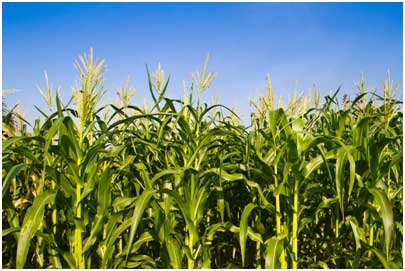 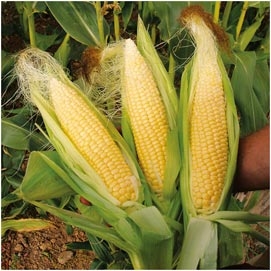
MAIZE
Botanical Name : Zea mays L.
Family : Poaceae (alt. Gramineae)
Subfamily : Panicoideae
Tribe : Andropogoneae
Introduction
- Maize is one of the most important fodder crop particularly for milch animals.
- The crop is grown in over 0.9 million ha in different parts of the country throughout the year.
- It is a C4 plant having high fodder production capacity in short duration.
- Maize is generally grown in the areas with rainfall of 50 cm, but higher yields are achieved in 120–150 cm rainfall areas.
- It is susceptible to water logging. In the early stage upto 35 days after sowing, the crop is drought tolerant.
- The crop prefers deep, fertile, organic matter rich, well drained soils with pH
5.5–7.5.
- Maize do not prefer heavy clay low land soils.
- The alluvial soils of Uttar Pradesh, Bihar and Punjab are suitable for raising maize crop.
OATS
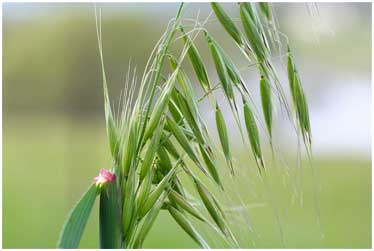 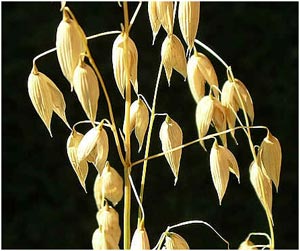
OATS
Botanical Name : Avena sativa L
Family : Poaceae (alt. Gramineae)
Subfamily : Pooideae
Tribe : Poeae
Introduction
- The protein Oat requires a long and cool season for its growth; therefore, it is successfully grown in the plains and hilly areas of the country.
- In India it is grown in Punjab, Haryana, Jammu & Kashmir, Himachal Pradesh, Uttar Pradesh, Madhya Pradesh, Rajasthan, Maharashtra and West Bengal.
- The total area covered under oat cultivation in the country is about
500 000 ha. The crop occupies maximum area in Uttar Pradesh (34%), followed by Punjab (20%), Bihar (16%), Haryana (9%) and Madhya Pradesh (6%).
Cultivation Practices
- Oat grows best in loam to clay loam soil with adequate drainage.
- They produce satisfactory yields on heavy or light soils with proper moisture. It can be grown under moderate acidic or saline conditions also.
- A seed rate of 80–100 kg/ha is recommended for uniform stand in oats.
- Low tillering varieties should be sown with 20–25 cm row-to-row spacing while high tillering type should be sown at 30 cm apart.
- Sowing of seed should preferably be done in line with seed drill or pore/kera behind the plough. Sowing time varies from one location to other.
- Normally, Oat sowing should be started in early October to end of November in north-west to east zone of the country.
- For regular supply of fodder from December to March, scattered sowing is also advocated.
- For seed production, the crop should be left for seed after the first cutting, which should be taken
50–55 days after sowing. For good re-growth, first cut should be taken at
8–10 cm above the soil surface
BERSEEM (EGYPTIAN CLOVER)
 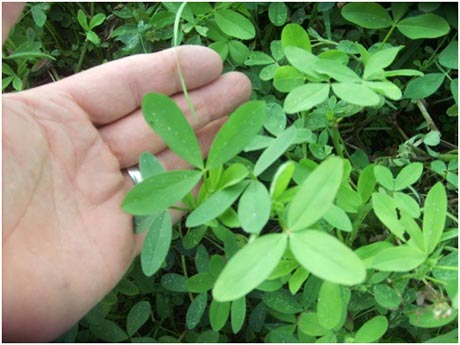
BERSEEM (EGYPTIAN CLOVER)
Botanical Name : TrifoliumalexandrinumL.
Family : Fabaceae (alt. Leguminosae)
Subfamily : Faboideae
Tribe : Trifolieae
Introduction
- In India berseem is the most important winter season legume cultivated in an area of around
2 million hectares.
- It appeared to behave as a most potent milk multiplier in the lactating buffaloes, Sahiwal cows and cross breed cattles as compared to other forage crops alone on in combination.
- These cultivars are multicut (4–8 cuts) in nature, providing fodder for a long duration (November to April), very high quantum of green fodder (85 t/ha) and better quality of fodder (20% crude protein), high digestibility (up to
65%) and palatability.
- The phenomenal success of Berseem in India is also due to its high nitrogen fixing ability resulting in substantial improvement in soil fertility.
Cultivation Practices
- Berseem can be grown on all types of soils except very light sandy soils.
- Well-drained clay loam soils rich in calcium and phosphorous are ideally suited for its cultivation.
- The crop can be grown successfully on alkaline soils having good water retention capacity. The crop can tolerate mild acidity also.
- For field preparation, one deep ploughing with soil turning plough and
2 harrowing are essential. The field may be laid out in to smaller beds of convenient size according to topography and source of irrigation water.
- The sowing of Berseem can be done from last week of September to first week of December. The ideal time of sowing is at mean day temperature of
250 C, which is recorded mostly in the first to third week of October in north India.
- The optimum seed rate is 25 kg/ha, which may be increased up to
35 kg in early or late sown conditions.
- First two very light irrigations (4–6 cm depth) should be given at
5–6 days interval. Subsequentirrigations may be given at an interval of
10 days in October, 12–15 days in November to January, 10–12 days in February-March and
8–10 days in April-May. Normally the cropshould be irrigated after each cutting.
LUCERNE (ALFALFA)
 
LUCERNE (ALFALFA)
Botanical Name : Medicago sativa L.
Family : Fabaceae (alt. Leguminosae)
Subfamily : Faboideae
Tribe : Trifolieae
Introduction
- Lucerne is commonly called as rijkain northern India. It is a perennial plant and can supply green fodder continuously for
3–4 years from the same crop stand.
- The root system is deep and so can be easily grown in the areas where water is in short supply. Lucerne has high palatability for all kinds of livestock as it provides nutritious fodder and possesses about
16-25% crude protein and 20–30% fiber.
- Due to its high protein and vitamin A content, it is included as a feed component for poultry and piggery.
- Lucerne provides green fodder for a longer period (November-June) in northern parts and throughout the year in other parts of the country where winters are not severe.
Cultivation Practices
- Lucerne needs sandy loam to clayey soil while heavy soils need an efficient drainage system, as the crop does not tolerate water logging.
- It cannot thrive on alkaline soils but can be grown on acid soils with liberal application of lime. Lucerne prefers a fertile soil, which is rich in organic matter, calcium, phosphorous and potash. Lucerne requires well prepared field as the seeds are very small. One deep ploughing with
2–3 harrowings followed by planking is sufficient.
- The best sowing time of the crop is mid October to early November.
- Proper drainage should be ensured to avoid water logging in rainy season.
- The first cutting should be taken at 55–65 days after sowing and the subsequent cuts may be taken
30–35 days interval.
- In general, annual lucerne gives 4–5 cuts while in the perennial crop,
7–8 cuts can be taken.
GUAR (CLUSTER BEAN)
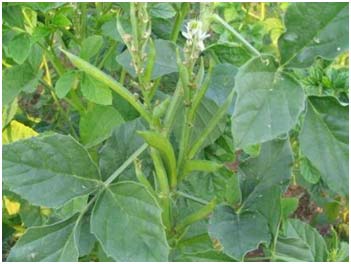 
GUAR (CLUSTER BEAN)
Botanical
Name : CyamopsistetragonolobaL. Taub
Family : Fabaceae (Leguminosae)
Subfamily : Faboideae
Introduction
- Guar is commercially grown mainly in India, Pakistan and United States.
- In India, guaris being grown in arid and semi-arid areas of north-western states mainly in Rajasthan, Gujarat, Haryana, Punjab, some parts of UP and MP covering about
2.56 million ha witha production of 0.72 million tonne of guar seed.
Cultivation Practices
- The crop grows well in sandy loams and alluvial soils.
- It is susceptible to water logging and prefers soils with pH 7.0–8.5. The field preparation requires two ploughings or two cross harrowing and planking. At the time of sowing,
15–20 kg N/ha should be applied.
- Seed inoculation with Rhizobium is promising for better performance of fodder crop.
- The crop grows well with application of 10 t /ha FYM or compost at time of sowing. The cropshould be fertilized with
50 kg P2O5/ha.
- All the fertilizers should be applied at the time of sowing in furrows
4–5 cm below the seed.
METHA (FENUGREEK)
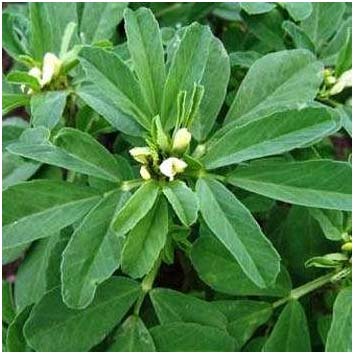 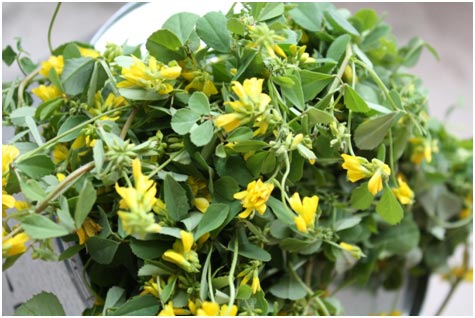
METHA (FENUGREEK)
Botanical Name : Trigonellafoenum-graecumL.
Family : Fabaceae (alt. Leguminosae)
Subfamily : Faboideae
Tribe : Trifolieae
- Fenugreek is grown as a cool season crop in India and the Mediterranean region both irrigated and as a rain fed crop; it will grow on a wide range of well-drained soils. In cooler areas it may be grown in summer.
- The seed crop requires warm dry weather for ripening and harvest.
- It has long been used as hay or green feed and is reputed to be highly nutritious. It is not suited to grazing. As hay crop it is best mixed with a white straw cereal.
- Fenugreek is highly palatable to livestock. A highly aromatic plant which is used as a pot-herb, spice and fodder.
- In India, plants are grown for forage. It is an annual and ripens
90–150 days after planting.
- In India, where grown for forage, October plantings are harvested in February –March, while January plantings are harvested in April. Green forage yield is about
9-10 t/ha and seed yield is 0.5–3.8 t/ha.
|
|
|
|
|
|
|
|
|
|
|
|
| Back |
|
|
Developed by :
|
Jaspal Singh
(Ex. M.V.Sc Scholar ) |
Dr. Pranav Kumar
(Assistant Professor)
|
Amandeep Singh
(Final Year B.V.Sc & AH student) |
|
|
|
|
|
|
Scroll
|
Division of Veterinary and Animal Husbandry Extension Education
Faculty of Veterinary Sciences and Animal Husbandry, R.S. Pura, SKUAST Jammu |
|
















